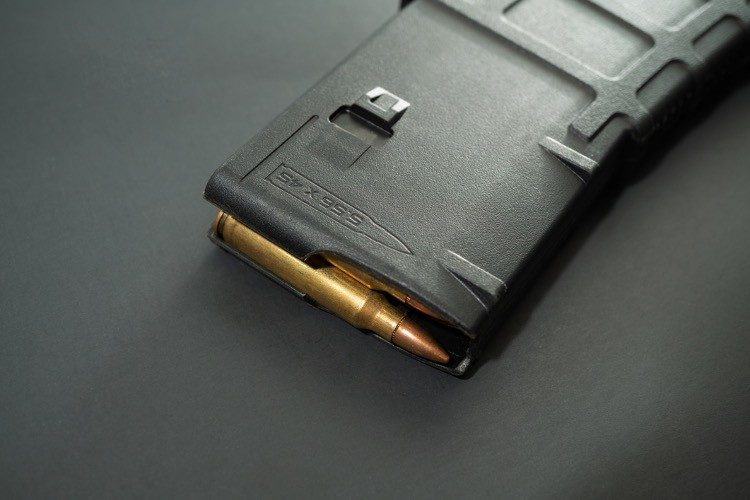
After a three-judge panel from the Ninth Circuit Court of Appeals upheld a lower court’s ruling that California’s LCM — large capacity magazine — ban was clearly unconstitutional, the en banc court reversed on Tuesday, upholding California’s unconstitutional ban.
The majority, 7-3, had to jump through some significant legal and logical hoops to reach their conclusion. First, it had to ignore the word “infringed” in the wording of the Second Amendment: “A well-regulated Militia, being necessary to the security of a free State, the right of the people to keep and bear Arms, shall not be infringed.”
A slight infringement is acceptable, wrote the majority, as long as it doesn’t really strongly impact a citizen’s right. Ten rounds are more than enough, ruled the court, using California’s argument that the average homeowner defending him or herself only uses 2.2 rounds in doing so and therefore having the freedom to carry a firearm with a magazine with 10 rounds ought to be plenty.
In its summary of the ruling, the court “determined that [California’s ban] imposed only a minimal burden on the core Second Amendment right to keep and bear arms … that [the state’s] limitation interferes only minimally with the core right of self-defense.”
Second, the court had to play the statistical game. As Mark Twain so aptly said, “There are lies, damned lies, and statistics.” From the summary:
The court noted that in the past half-century, large-capacity magazines have been used in about three-quarters of gun massacres with 10 or more deaths and in 100 percent of gun massacres with 20 or more deaths, and more than twice as many people have been killed or injured in mass shootings that involved a large-capacity magazine as compared with mass shootings that involved a smaller-capacity magazine.
Accordingly, the ban on legal possession of large-capacity magazines reasonably supported California’s effort to reduce the devastating damage wrought by mass shootings.
So, because a mass shooting resulting in 10 or more deaths — an exceedingly rare event — might involve a firearm with a magazine carrying more than 10 rounds, all such magazines must be banned.
The majority goes on to say that “reasonable restrictions on the time, place, or manner of exercising the Second Amendment right … are permissible if they leave open ample alternative means of exercising that right … [the California ban] leaves open ample alternative means for self-defense.”
Judge Lawrence VanDyke, a Trump appointee who was vetted by the Federalist Society, would have none of it. One of the three dissenters, he dismantled the majority opinion. He began by stating the obvious: that every claim that a law infringed on the Second Amendment brought before the court was denied.
He wrote:
Our court’s [majority has a] single-minded focus on ensuring that any [3-judge] panel opinions actually enforcing the Second Amendment are quickly reversed.
The majority of our court distrusts gun owners and thinks the Second Amendment is a vestigial organ of their living constitution.
Those views drive this circuit’s case law ignoring the original meaning of the Second Amendment….
By my count, we have had at least 50 Second Amendment challenges since Heller — significantly more than any other circuit — all of which we have ultimately denied.
In those few instances where a panel of our court has granted Second Amendment relief, we have without fail taken the case en banc to reverse that ruling.
This is true regardless of the diverse regulations that have come before us — from storage restrictions to waiting periods to ammunition restrictions to conceal carry bans to open carry bans to magazine capacity prohibitions — the common thread is our court’s ready willingness to bless any restriction related to guns.
Judge VanDyke takes on the silliness of California’s claim that firearms with a magazine carrying more than 10 rounds makes that firearm excessively dangerous:
Essentially every attribute of a weapon that makes it more effective for self-defense makes it more dangerous when misused.
Good sights on a handgun make it more effective for lawful self-defense — but also make it more dangerous when misused.
A pistol that doesn’t malfunction is really nice to have in a self-defense situation — but is also more dangerous when misused.
Modern hollow-point ammunition, with its dramatically increased stopping potential, has seriously improved the performance of handguns in a self-defense situation — but of course also make the handgun more dangerous when misused.
This type of logic, applied the way the majority does, would justify banning all semi-automatics since they are more dangerous than revolvers, all revolvers since they are more dangerous than derringers, all derringers since they are more dangerous than knives … until we are left with toothpicks….
The mere fact that some attribute (like a larger capacity magazine) might make a weapon more “dangerous” when misused cannot be a basis to avoid the Second Amendment — if so, the Second Amendment protects only nerf guns.
The dissenting judge ends his vivisection of the majority opinion:
If ever there was a case study illustrating Madison’s concern about “evil lurking under plausible disguises, and growing up from small beginnings,” it is our circuit’s Second Amendment jurisprudence.
In the thirteen years since the Supreme Court ruled in Heller that the Second Amendment “guarantee[s] the individual right to possess and carry weapons in case of confrontation,” our court has trimmed back that right at every opportunity — to the point that now, in the nine Western states covered by our court, the right to “keep and bear arms” means, at most, you might get to possess one janky handgun and 2.2 rounds of ammunition, and only in your home under lock and key.
That’s it.
That’s ridiculous, and so I must respectfully dissent.
That there’s this much common sense lurking even in the bowels of the Ninth Circuit should give great comfort to supporters of the Second Amendment, as the Ninth Circuit Court’s ruling is certain to be appealed to the Supreme Court.



